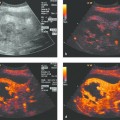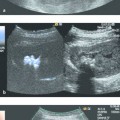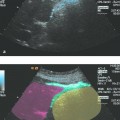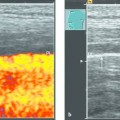Medications, Equipment, and Setup Requirements
4.1 Medications
Chapters ▶ 7, ▶ 8, ▶ 9 may be consulted for further information on medications for endocarditis prophylaxis and on dealing with and correcting coagulopathies prior to interventional procedures.
4.1.1 Premedication
Sedation
Interventional procedures often require sedation as well as adequate patient monitoring. The risk of serious side effects depends on the type of procedure, the individual risk profile of the patient, and the spectrum of side effects associated with the sedative agent. Whether to use sedation (and analgesia) is always decided on an individual basis. Individual criteria are the patient, the operator/examiner, and the planned procedure. Thus, minor procedures (e.g., thoracentesis, paracentesis, percutaneous liver biopsy) and procedures that require patient cooperation (e.g., deep inspiration to aid lesion visualization) can often be performed successfully without sedation. On the other hand, sedation-analgesia is essential for longer and potentially painful procedures (e.g., abscess drainage, PTCD, nephrostomy, local tumor therapy) (see Chapter ▶ 11).
Risk Factors
The risk profile depends on the type of procedure and the health status of the patient. The individual patient risk should be assessed before any interventional procedure is performed. The ASA (American Society of Anesthesiologists) classification is helpful in assessing patient risk.1–4
The following factors are associated with an increased risk (ASA class III to V):
Decompensated heart failure
NYHA class III to IV
Coronary heart disease
Valvular heart disease
Liver and renal failure
Pulmonary diseases
Coagulopathies
Thus, a detailed history and clinical examination should be performed before every interventional procedure. The physician performing the intervention should be aware of any comorbid conditions so that preventive care measures (e.g., endocarditis prophylaxis) can be instituted to prevent complications.
Since interventions may be unpleasant as well as painful, the patient may express a desire for sedation and the physician may recommend it in advance of the procedure. Interventional procedures, especially those of a difficult nature (percutaneous transhepatic cholangiography and drainage [PTCD], abscess drainage, endoscopic ultrasonography with fine-needle biopsy [EUS-FNB]), require an immobilized patient. Sedation facilitates and expedites this goal and also results in higher patient satisfaction.5
4.1.2 Analgesia
The following interventional procedures often require sedation with analgesia:
Abscess drainage (Chapter ▶ 15)
Percutaneous therapy of liver tumors (Chapters ▶ 18 and ▶ 19)
PTCD (Chapter ▶ 20)
Sedation is withheld if the procedure will require active cooperation from the patient such as deep inspiration or a short breath-hold to aid localization. Propofol is indicated in cases where patient cooperation is not required, when the patient is very anxious, when the patient expressly desires procedural sedation, or in patients with a prior history of poor or paradoxical response to other sedatives (▶ Table 4.1).
| Agent | Brand name | Dosage |
| Benzodiazepines | ||
| Midazolam | Dormicum | 2–5 mg IV; up to 10 mg in rare cases (bolus of 30–80 mg/kg BW1,6–8) |
| Propofol | Disoprivan | Intermittent bolus injection1: 40/60 mg bolus (for <70 kg BW, 60 mg for >70 kg BW), then 10–20 mg boluses while monitoring depth of sedation |
| Analgesics | ||
| Pethidine | Dolantin | 25–50 mg IV |
Benzodiazepine and opioid antagonists should always be immediately accessible (▶ Table 4.2). The routine use of antagonists is not recommended.
| Agent | Brand name | Dosage |
| Benzodiazepine antagonist | ||
| Flumazenil | Anexate | 0.2–0.5 mg IV (bolus) |
| Opioid antagonist | ||
| Naloxone | Narcanti | 0.4–2 mg IV |
Intravenous sedation requires secure intravenous access throughout the procedure and recovery period. Intravenous access is necessary even in patients not receiving primary sedation, as it will permit a rapid response to any complications that arise. Medication doses are adjusted for individual body weight and titrated to response. Resuscitation drugs and equipment should be immediately accessible. Pulse oximetry is routinely employed. Nasal oxygen supplementation is optional but should be available whenever propofol is used1,9–12 (▶ Table 4.3).
| Procedure | Recommendation |
| 1. Monitoring | Monitoring by qualified personnel |
| Pulse oximetry should always be used | |
| Suitable rooms and monitoring equipment should be available for postinterventional monitoring | |
| 2. Sedation | Sedative dosage should be adjusted for each patient individually, and antagonists should be accessible |
| The use of propofol means more stringent monitoring requirements: a pulse oximeter and BP monitor, or preferably an ECG and BP monitor should be available. Oxygen administration should be available if required13–16 | |
| Intravenous sedation requires secure intravenous access, patient monitoring, and immediate accessibility to resuscitation drugs and equipment. It should be noted that procedural sedation with propofol significantly reduces pain sensation | |
| 3. Individual risk assessment | Individual patient risk should be determined in advance of the procedure based on ASA criteria |
4.1.3 Coagulation
Stay updated, free articles. Join our Telegram channel

Full access? Get Clinical Tree








